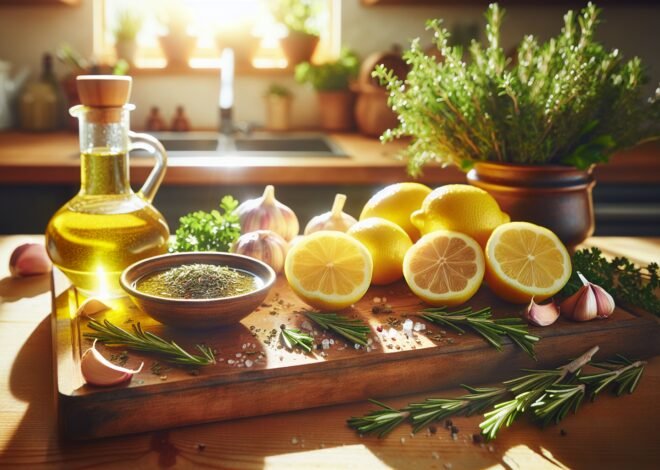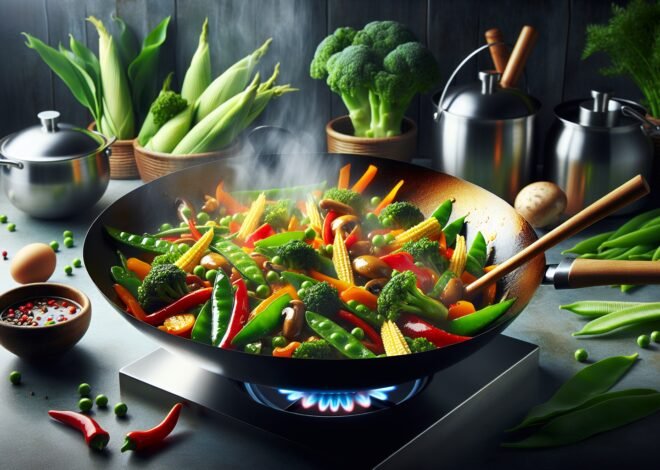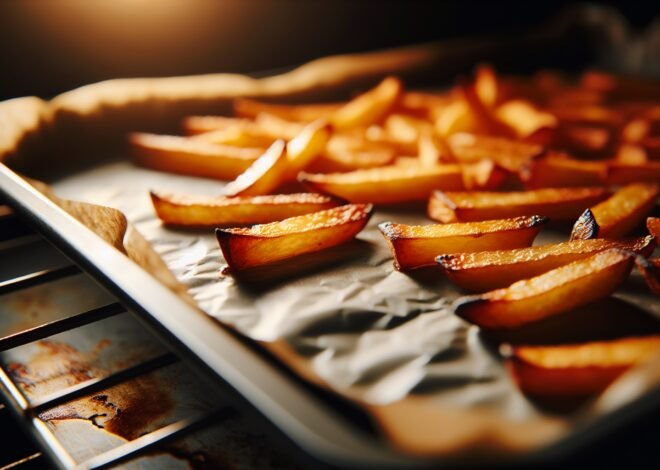
How to Adjust Recipes for Different Oven Types and Temperatures
Not all ovens are created equal, and understanding your oven’s unique qualities can help you adjust recipes for better results. In this guide, learn how to adapt recipes to match your oven type and avoid common pitfalls for more consistent outcomes.
Factors That Affect Baking in Different Ovens
Baking is a science, yet it is also an art. It requires understanding how your oven works to achieve the perfect bake. Different ovens have distinct characteristics that influence how evenly and efficiently they cook. Understanding the specific factors that affect baking in various ovens can help you adapt to any situation and create consistently successful dishes.
Convection vs. Conventional Ovens
Convection and conventional ovens differ mainly in how they circulate heat. Convection ovens have fans that circulate hot air, promoting even cooking and browning. This makes them ideal for baking multiple trays of cookies or roasting meats.
- Efficiency: Convection ovens generally cook food faster than conventional ovens. You might need to adjust the temperature by reducing it by 25°F (about 15°C).
- Evenness: The fan ensures that heat is distributed evenly, reducing the need to rotate pans.
- Baking Results: Expect a crisper, more evenly browned surface on baked goods.
Conventional ovens, on the other hand, rely on radiant heat from the top and/or bottom. This can result in hot spots and uneven cooking, especially when baking multiple trays. Understanding your oven type helps you make the necessary adjustments for optimal results.
Age and Type of Oven
The age and type of your oven can greatly influence baking outcomes. Older ovens may not heat as evenly or accurately as newer models. This discrepancy can lead to uneven baking or longer cooking times.
- Older Models: May require recalibration. An oven thermometer can help verify temperature accuracy.
- Newer Models: Typically more precise with advanced features like digital controls and self-cleaning functions.
- Gas vs. Electric: Gas ovens tend to have moister heat due to water vapor from burning gas, while electric ovens provide drier heat, which can affect baking texture.
Understanding the specific traits of your oven allows you to adapt and ensure that every bake is a success.
Altitude Adjustments
Baking at high altitudes requires adjustments due to lower air pressure. This can affect how ingredients interact and rise, impacting both texture and flavor.
- Rising Time: Doughs and batters may rise faster, necessitating reduced yeast or baking powder.
- Liquid Adjustments: More liquid might be needed to compensate for rapid evaporation.
- Temperature Changes: Increase oven temperature slightly to help set baked goods before they over-expand.
With proper adjustments, high-altitude baking can yield delicious results, no matter how challenging the elevation.
Common Recipe Adjustments
Every recipe is a guideline, not a strict rule. Adjustments are often necessary to accommodate different ovens and personal tastes. Learning to tweak recipes for time, temperature, and ingredient proportions can help you achieve the best results, tailored to your specific kitchen setup.
Adjusting Time and Temperature
Time and temperature are crucial elements in baking. Different ovens may require slight tweaks to these parameters to ensure your baked goods turn out perfectly.
- Time Adjustments: Keep an eye on your bakes. If they brown too quickly or not enough, adjust your baking time accordingly.
- Temperature Tweaks: Consider lowering temperatures for convection ovens or increasing them for older models to match recipe expectations.
- Testing for Doneness: Use toothpicks or cake testers to check if baked goods are cooked through, ensuring perfect results.
Adapting time and temperature can make a world of difference, turning good recipes into spectacular creations.
Changing Rack Placements
Rack placement affects how heat circulates around your food. By experimenting with different positions, you can optimize how your dishes bake.
- Middle Rack: Ideal for most baking tasks, as it allows even heat distribution.
- Lower Rack: Use this placement for dishes that require browning on the bottom, such as pizza or bread.
- Upper Rack: Best for broiling or adding a crispy top to casseroles and gratins.
Rotating pans and adjusting rack placements can significantly impact the success of your baking, ensuring even and consistent results.
Modifying Liquids and Fats
Liquids and fats are key ingredients that influence the texture and flavor of baked goods. Adjusting these components can ensure that your recipes are perfectly suited to your oven.
- Fats: Choose between butter, margarine, or oil to influence flavor and moisture levels.
- Liquids: Vary milk, water, or juice quantities to adjust consistency and hydration.
- Substitutions: Experiment with alternatives like applesauce or yogurt to achieve desired textures or cater to dietary needs.
With careful tweaking, modifying liquids and fats can elevate your baking, producing delightful textures and flavors that resonate with your taste preferences.
Tips for Successful Baking in Any Oven
Mastering the art of baking requires understanding your oven’s unique quirks and characteristics. With a few thoughtful tips and techniques, you can achieve consistent success in your baking endeavors, regardless of the oven you are using.
Preheat Fully and Consistently
Preheating your oven is a fundamental step that sets the stage for successful baking. A well-preheated oven ensures even heat distribution from the start.
- Start Early: Begin preheating your oven at least 15 minutes before baking.
- Use an Indicator: Ovens with built-in indicators or lights make it easy to know when they’re ready.
- Maintain Consistency: Avoid opening the oven door unnecessarily to keep heat consistent.
With the right preheating practices, you can guarantee that your baked goods start cooking at the perfect temperature, preventing issues like uneven baking or flat cakes.
Rotate Pans for Even Cooking
Even with a perfectly preheated oven, rotating pans can ensure all sides of your baked goods receive equal heat exposure. This is especially important in ovens with hot spots.
- Halfway Point: Rotate pans halfway through the baking process.
- Multiple Trays: Swap positions of trays if you are baking more than one at a time.
- Observe Changes: Note how rotation affects the bake and adjust accordingly in future endeavors.
Rotating pans offers a simple yet effective way to achieve uniform results, ensuring that every part of your dish is cooked to perfection.
Use an Oven Thermometer When Needed
Oven thermostats can sometimes be inaccurate, leading to uneven baking results. An oven thermometer provides a reliable solution to this common problem.
- Accuracy: Place the thermometer in your oven to verify the temperature reading.
- Adjustments: Make necessary temperature changes if the oven’s built-in settings are off.
- Consistency: Regularly checking with a thermometer can help maintain consistent baking outcomes.
With an oven thermometer, you can bake with confidence, knowing that your oven is at the perfect temperature for every recipe you try.
Conclusion
Adapting recipes to suit different ovens is an essential skill for ensuring consistent cooking results. Whether you’re using a convection oven, an older model, or cooking at high altitudes, each oven has unique characteristics that impact cooking times and temperatures. Adjusting based on your oven type can prevent uneven cooking, undercooked centers, or over-crisped edges. Understanding these factors will help you make minor tweaks for the best outcomes. Tailoring your recipes to your specific oven improves reliability and enhances the flavors and textures of your finished dishes.
FAQ
How can I adapt recipes for convection ovens?
Convection ovens cook food faster due to the circulating hot air. Lower the temperature by 25 degrees Fahrenheit or reduce the cooking time by 25%. This adjustment helps prevent overcooking or burning. Keep an eye on your dish the first time you make the change to see how it affects your recipe.
Do older ovens require temperature adjustments?
Older ovens might not heat evenly or may have inaccurate temperature settings. Use an oven thermometer to check the actual temperature and adjust as needed. This ensures your food cooks properly without undercooking or overcooking. Regular maintenance can also help improve performance.
How does altitude affect oven settings?
High altitude affects cooking times and temperatures. At higher elevations, decrease the baking temperature by 15 to 25 degrees Fahrenheit and increase the cooking time. This helps compensate for the lower air pressure, ensuring your baked goods rise correctly.
Should I alter baking times in new ovens?
New ovens often have more accurate temperature controls. However, it’s wise to test recipes initially. Baking times might need a slight adjustment depending on the oven’s efficiency. Monitor your dishes closely until you get accustomed to the new appliance.
Can I adjust recipes for toaster ovens?
Toaster ovens have quicker heat times and smaller spaces, which can speed up cooking. Lower the temperature by 25 degrees Fahrenheit and keep a close watch on the timing. Smaller batches can also ensure even cooking without burning.
What’s the best rack for baking?
The middle rack usually provides the most even heat distribution for baking. It allows air to circulate around the food, ensuring even cooking. Adjust the rack position depending on specific recipes, such as moving it higher for broiling or lower for slow roasting.











